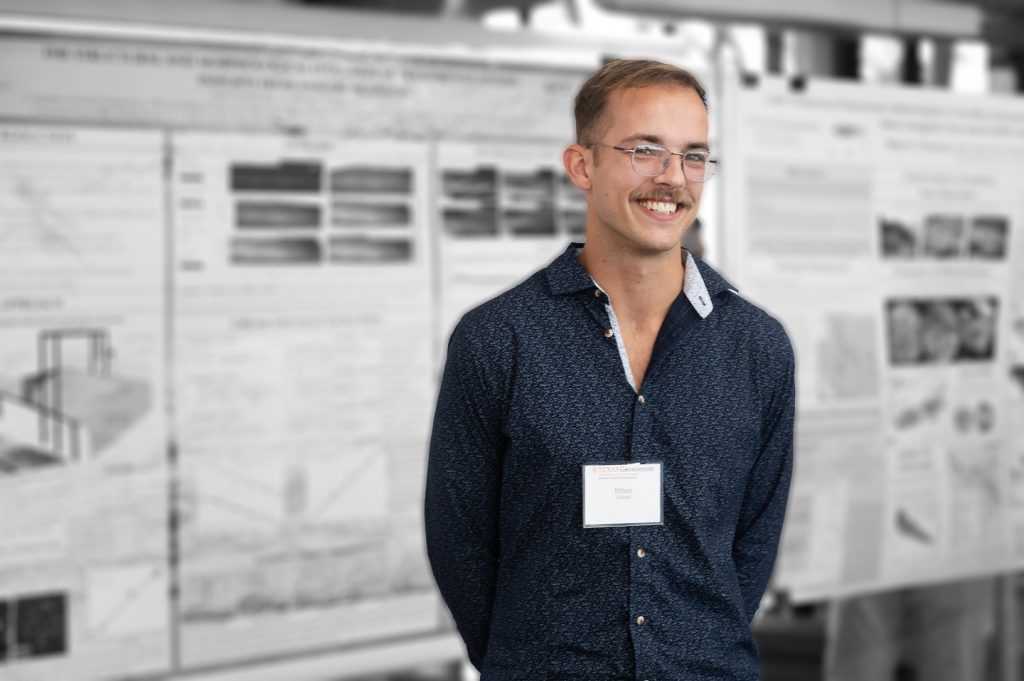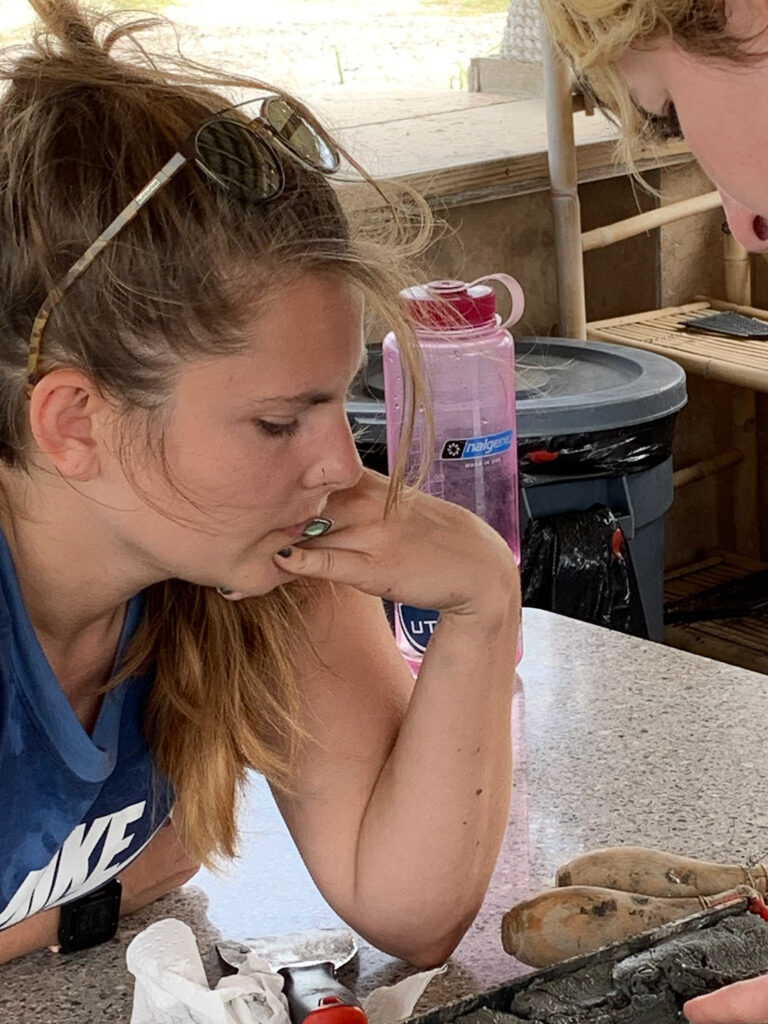Friday, December 8, 2023 at 10:30am CT
Each year, the week before AGU’s Fall Meeting, we invite UTIG graduate researchers to practice their AGU talks. Each presenter will be given 11 minutes, as per AGU’s oral presentation for 2023, followed by a few minutes for Q&A and feedback.
Talk One
Speaker: Mikayla Pascual
Title: Ice-sediment coupling increases modeled ice volume
Abstract: Submarine moraines (also termed morainal banks) in marine-terminating outlet glacier settings can provide a feedback mechanism for glacier stability that influences their dynamics. However, sediment dynamics are rarely included in ice flow models, and with limited understanding and observations at glacier termini, the impact of ice-sediment feedbacks on future sea level change remains unquantified. To advance our understanding of sediment dynamics on ice flow, we quantify the impact of sedimentation on outlet glacier ice volume over different timescales and in different marine-terminating glacier climates (e.g., Greenland, Antarctica, Alaska) using a coupled ice-sediment model. We include diffusion (removing sediment from moraines) and glaciofluvial sedimentation (adding sediment to moraines) in an idealized flowline model adapted from Brinkerhoff et al., (2017). We run an ensemble of simulations across a range of different bed topography slopes and surface mass balance scenarios that represent settings in Greenland, Alaska, and Antarctica. Where tidewater glacier cycles appear, we find that the inclusion of sediment dynamics results in an underestimation of ice volume up to 2-22.5%. Thus, the coupling between sediment and ice dynamics could contribute to the divergent glacier behavior presently seen in Greenland. Model runs show that sedimentation has a strong control on ice volume and that tidewater glacier cycles have variable amplitudes in time. Future work includes disentangling and quantifying processes that impact the amplitude and timing of tidewater glacier cycles across these different environments. This work provides insights applicable to ice sheet model development and field-observation efforts aimed at understanding the rates and processes driving sedimentation in marine-terminating glaciers globally.
Talk Two
Speaker: Ethan Conrad
Abstract: Many studies of transpression focus on the structural development of the orogenic system without including the effects of surface processes; this restricts our ability to representatively constrain, interpret, and model such systems through time. Here, we present a new set of analog models that investigate how tectonic and surface processes interact to shape topography. Experiments were conducted in a 2 × 1 × 0.5 m plexiglass box, with ends left open for drainage. We mount a plexiglass board to the sidewall inside the box – cut to impose a fixed convergence angle. A mylar sheet is pulled under the board, initiating deformation at the velocity discontinuity between the fixed board and the moving sheet. We load the board–sheet set up with a ~5 cm thick package of a previously benchmarked analog material (cf. CMII in Reitano et al., 2020, doi: 10.5194/esurf-8-973-2020). Surface processes are initiated using misting nozzles aligned with the wedge trend. We use a laser scanner to generate digital elevation models throughout the models for particle image velocimetry analysis. We focus on three experiments conducted using this system across various rainfall and convergence settings. Two tests represent end member surface process intensity settings, and the third is a dry reference model. We explore potential feedbacks between drainage and fault networks to understand morphological differences between experimental wedges with high, low, and no erosion. A bivergent wedge forms in all experiments, and strain partitioning broadly evolves following previously established models. We find that erosion may influence the structural evolution of transpressional mountain belts leading to accelerated strike-slip partitioning. We also highlight how incision along main structures may localize exhumation in the system. We apply this model to assist in understanding uplift, deformation, and erosion patterns in natural transpressional systems, including the central Transverse Ranges of the San Andreas, the Merida Andes of Venezuela, and the Central-Western Cordilleras of Colombia.
Talk Three
Speaker: Carson Miller
Host: Sean Gulick
Title: Internal sand bank seismic stratigraphy provides insight into paleo-barrier island preservation
Abstract: Barrier islands are rarely preserved in the geologic record, so preserved overwash deposits, tidal inlets, and wave-ravinement surfaces are used to identify the location of barrier remnants through time. Barrier island preservation generally requires subaqueous environments that maximize accommodation and sediment supply. Antecedent lows, subsidence, and sea-level rise can increase accommodation, while longshore currents, storms, tides, and climate change increase sediment supply. Preserved barrier remnants can be used as sand resources for nourishment projects to combat shoreline erosion from increasing rates of sea-level rise. Additionally, because preserved barrier remnants are so rare, they provide insight into the conditions that lead to barrier drowning which can be used to advise coastal policy makers. This study aims to understand the coastal processes that maximize preservation of paleo-barrier remnants, understand the conditions that lead to barrier island drowning, and identify viable sand resources for the state of Texas. Using high resolution Chirp sub-bottom data collected over Heald and Sabine Banks, offshore of Galveston Island, TX, we identified 5 major seismic facies, 6 seismic horizons, and 5 seismic units. The internal stratigraphy of Heald Bank shows predominantly homogenous, low-amplitude facies with few internal horizons overlying the transgressive ravinement, while Sabine Bank consists of high-amplitude, landward dipping reflectors beneath the transgressive ravinement, likely indicative of preserved subaqueous overwash deposits. This suggests Sabine Bank is a barrier remnant, while most of Heald Bank is a marine sand bank. The overwash unit of Sabine Bank displays landward thinning deposits with reflections increasing in amplitude and displaying lower gradients landward. We hypothesize that higher gradients seaward indicate greater proximity to the barrier island. Additionally, the Sabine Valley is mostly filled with estuarine sediment leaving only ~5 meters of accommodation present in a limited area of the northeast portion of Sabine Valley, suggesting antecedent accommodation is very limited. Other factors, like climate change and sediment supply could also influence the drowning and preservation of barrier islands and need further exploration.



